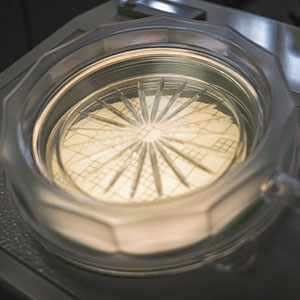
In the pharmaceutical manufacturing industry, ensuring sterility and minimizing microbial contamination is very important to maintain product quality and safety. Microbial sampling is a major component of environmental monitoring, and understanding optimal criteria for sampling can significantly affect the effectiveness of sterility guarantee programs.
Introduction to Microbial Sampling Methods
In pharmaceutical manufacturing facilities, microbial sampling is carried out using several methods, each with its own instrument set and technique. The main methods include:
- Surface sampling: Usually done using a swab or contact plate to collect microbes from the surface.
- Aerosol environmental sampling (air): Involves the use of local plates to capture air particles that settle from time to time.
- Active aerosol (water) environmental sampling: Utilizing devices that actively attract air through collection media, such as design, to capture air microorganisms.
Characteristics of the Sampling Method
Surface sampling
Efficiency of surface sampling depends on the selected methodology – outbreaks or contact plates. For wipe, efficiency is influenced by the movements used during sampling, both for small or large surfaces. Contact plates depend on factors such as pressure and contact time. Validation of this method in places is very important, because different media and local environmental conditions (such as temperature and humidity) can affect results.
Passive aerosol sampling
Passive sampling involves the placement of settings in the environment. Collection efficiency can be influenced by local air flow and the potential for drying media due to exposure. Proper placement and environmental conditions are very important for accurate results.
Active aerosol sampling
Active air sampling involves devices that actively pull air through the collection media, often agar plates. This method focuses on two main efficiency:
- Physical collection efficiency: Related to microbial impactions to collection media. Factors such as the speed of the inlet, profit flow, and physical design of the sampler (such as the high height of the Biocapt® high Imbrector) play a role in optimizing the efficiency of the collection.
- Biological collection efficiency: Involves the ability of samplers to accurately capture and promote microbial growth.
Key factors that influence active air sampling:
- Impacts: The speed at which air is pulled through sampler affects microbial impactions to the media. The impaction path and the width of the gap are very important in determining efficiency.
- Isokinetic sampling: To ensure accurate sampling without disrupting air flow patterns, the sampling probe must be in accordance with the velocity of the incoming air (isokinetic conditions). Deviations from this condition (super-isokinetics or sub-isokinetics) can cause inaccurate sampling.
- Flowrate: Total flow through samplers affects the speed and efficiency of sampling. High flowrate can cause faster media drying.
- Desiccation of Media: High flowrates can accelerate media drying, which can reduce the promotion of growth test isolates.
Physical D50 Efficiency Results:
The D50 value represents the particle size where 50% of the particles are collected. This value is very important to understand the efficiency of various samplers and its ability to capture various particle sizes.
Want to learn more?
Download the full paper here
News
Berita
News Flash
Blog
Technology
Sports
Sport
Football
Tips
Finance
Berita Terkini
Berita Terbaru
Berita Kekinian
News
Berita Terkini
Olahraga
Pasang Internet Myrepublic
Jasa Import China
Jasa Import Door to Door

